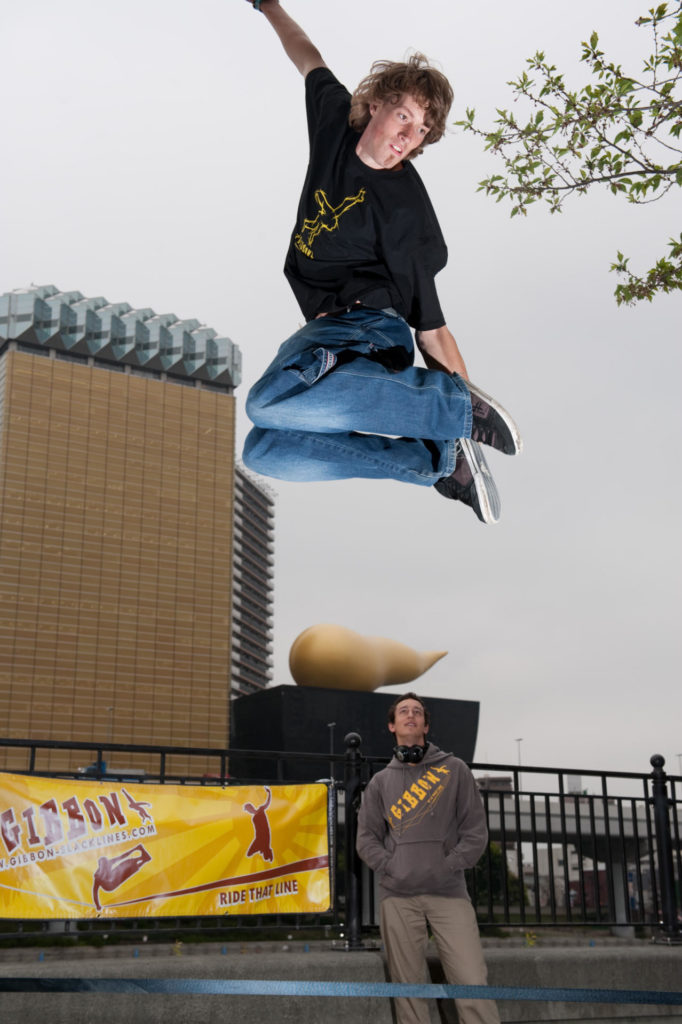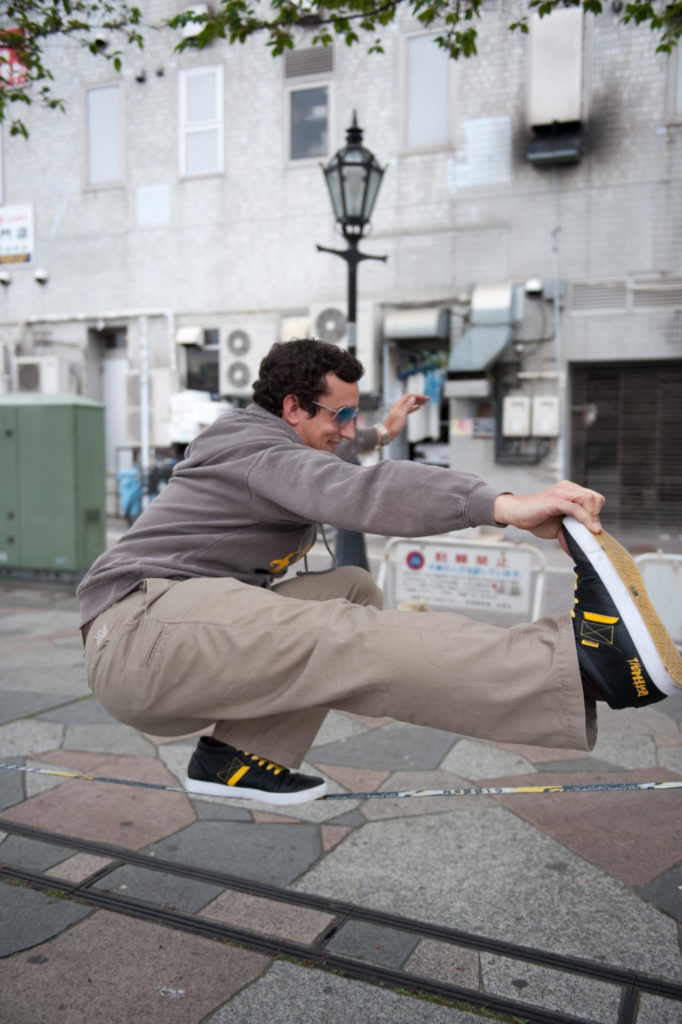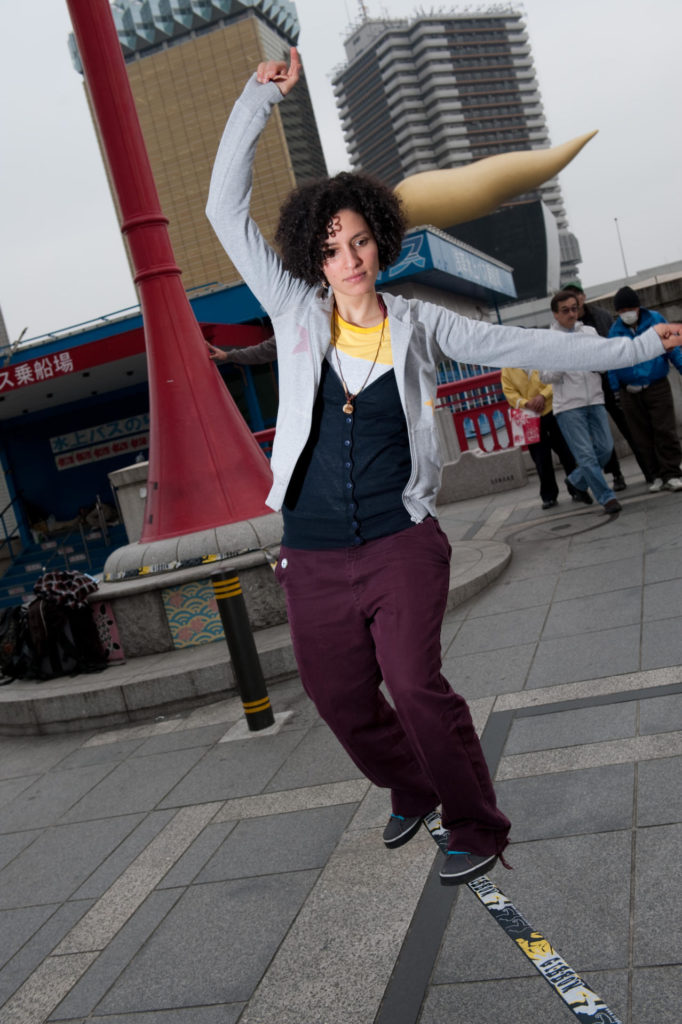Gibbon brings slacklining to Japan

I am pathologically frightened of heights, so the idea of being suspended on an inch-thick wire above a canyon doesn’t excite me even slightly. I was kind of expecting to see some variation of this crazy notion at the Gibbon slackline event hosted by Berghaus—mad acrobats traversing 10 foot-high tightropes with no consideration for the injuries gravity might inflict.
The reality, thankfully, was different. Slacklining, unlike its death-defying “highlining” cousins, is an urban sport that can be enjoyed anywhere you can find two solid anchors. Trees, lampposts and pillars are great for suspending a slackline which adds to its spontaneous nature.

Nick ten Hoopen, one of Gibbon’s pro “slackers,” set up a line between two lampposts near Asakusa’s Kanda River. He ratcheted it until it quivered with tension and then, balancing like a monkey, he proceeded to glide across the line. Upon reaching the end of the line, he swiveled and, with a startling twang, leapt five feet back into the middle of the slackline.
A gaggle of Chinese tourists gathered around to shout encouraging remarks at this six-foot-tall, sandy-haired Dutch giant bobbing up and down on a suspended line in the middle of Tokyo. Nick grinned and played to the crowd, bounding high into the air with an “ollie” before landing back on the trembling line.
A slackline is essentially a seatbelt strengthened and optimized for springiness and tension. There is a sturdy ratchet at one end the line is looped through, which easily allows riders to tighten the line to their preferred tension. That’s pretty much it.
The sport truly embraces the concepts of “urban” and “free.” All skateboarders need is a plank with four wheels, and all a slackliner needs is a slackline and two anchor points. It’s about as free-form an urban sport as one can get without jumping off or climbing buildings. And you won’t need to run away from the local authorities when you’re done.

 Gibbon has a variety of slacklines available. The “Traveler” is a smaller, shorter slackline designed to be mobile, so you can take it with you while you travel, as you would a football or a flying disc. The longer, heftier version, the “Jibline,” is a 15-meter-long band that can hold up to about five tons.
Gibbon has a variety of slacklines available. The “Traveler” is a smaller, shorter slackline designed to be mobile, so you can take it with you while you travel, as you would a football or a flying disc. The longer, heftier version, the “Jibline,” is a 15-meter-long band that can hold up to about five tons.
Both versions conveniently roll up to about the size of a small pizza, and are considerably easier to carry than one. Another Gibbon slackliner, Jan Kaeding, joked, “The best thing is you can also hold your suitcase shut with them, so it’s fun and practical.”
Fun it is. When the wobbly line bucks you off, the first thing you do is jump back on, determined to stay on longer.
“The idea is to balance with your arms in the air like you were a monkey – if you do it right, you look like a gibbon,” says Jan, demonstrating.
In the background, Nick lands a 360-spin on the narrow line and then starts to “surf,” a technique requiring the rider to swing the line violently to and fro while trying to stay on. It looks like a good recipe for a split head to me.
The reality is slacklining is still relatively new, so there’s potential for developing freestyle tricks. Riders such as Nick are at the cutting edge, figuring out new things all the time.
Tricks are, however, the lesser half of what slacklining is all about. For most people, it means a new, cheap way to get out there and improve one’s balance, coordination and muscle tone—and have fun doing it.





